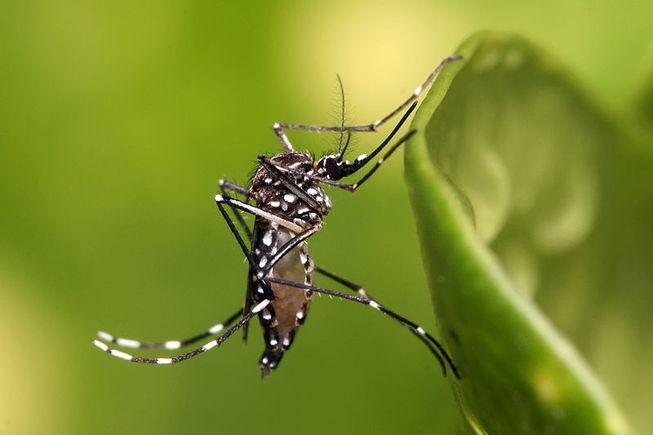How mosquitoes sniff out human sweat
Understanding how mosquitoes sniff out their prey is crucial to understanding how to better defend against them. With this in mind, geneticists at Florida International University in Miami have zeroed in on a key protein found in some mosquito antennae that seems essential to these bloodsuckers’ ability to locate human hosts, reports Science News.
Researchers looked specifically at Aedes aegypti mosquitoes, which are responsible for the spread of Zika and dengue fever. These bugs also tend to prefer human blood over any other animal, so they’re particularly pesky.
It just so happens that human skin and its microbiome give off a lot of lactic acid compared with other vertebrates, especially in our sweat, which is one of the main odorous substances that mosquitoes cue in on. Geneticist Matthew DeGennaro and his team were able to identify a protein, IR8a, found in mosquito antennae (their primary sniffing organ) that is particularly adept at picking out lactic acid.
Furthermore, tests showed that mutant mosquitoes that lack IR8a or have a malfunctioning version of it were only about half as likely to settle on a human arm or sweat-stained sock as normal mosquitoes.
What this means is that breeding mosquitoes with poor lactic acid receptors could significantly reduce the impact of mosquito-borne diseases on human populations, as well as lessen the number of bites we all incur. It’s a major finding in the battle against our bloodsucking insect nemeses.
It should be noted, however, that mosquito odor detection is way more complex than it is for vertebrates, and merely tackling IR8a is only the beginning of a solution. Also, lactic acid isn’t the only trick up mosquitoes’ sleeves. Carbon dioxide, which is what we breath out, is like “mosquito coffee” according to DeGennaro, and other information, such as atmospheric heat, moisture and the sight of something bitable, all are factors in how mosquitoes hunt us down.
Our chemical signatures are complex, and mosquito sniffers have evolved to match that complexity.
Even so, identifying IR8a is a doorway to understanding mosquito senses, which ought to lead to more targeted genetic solutions to our mosquito problems, as well as to the development of more effective, and more environmentally safe, repellants.

